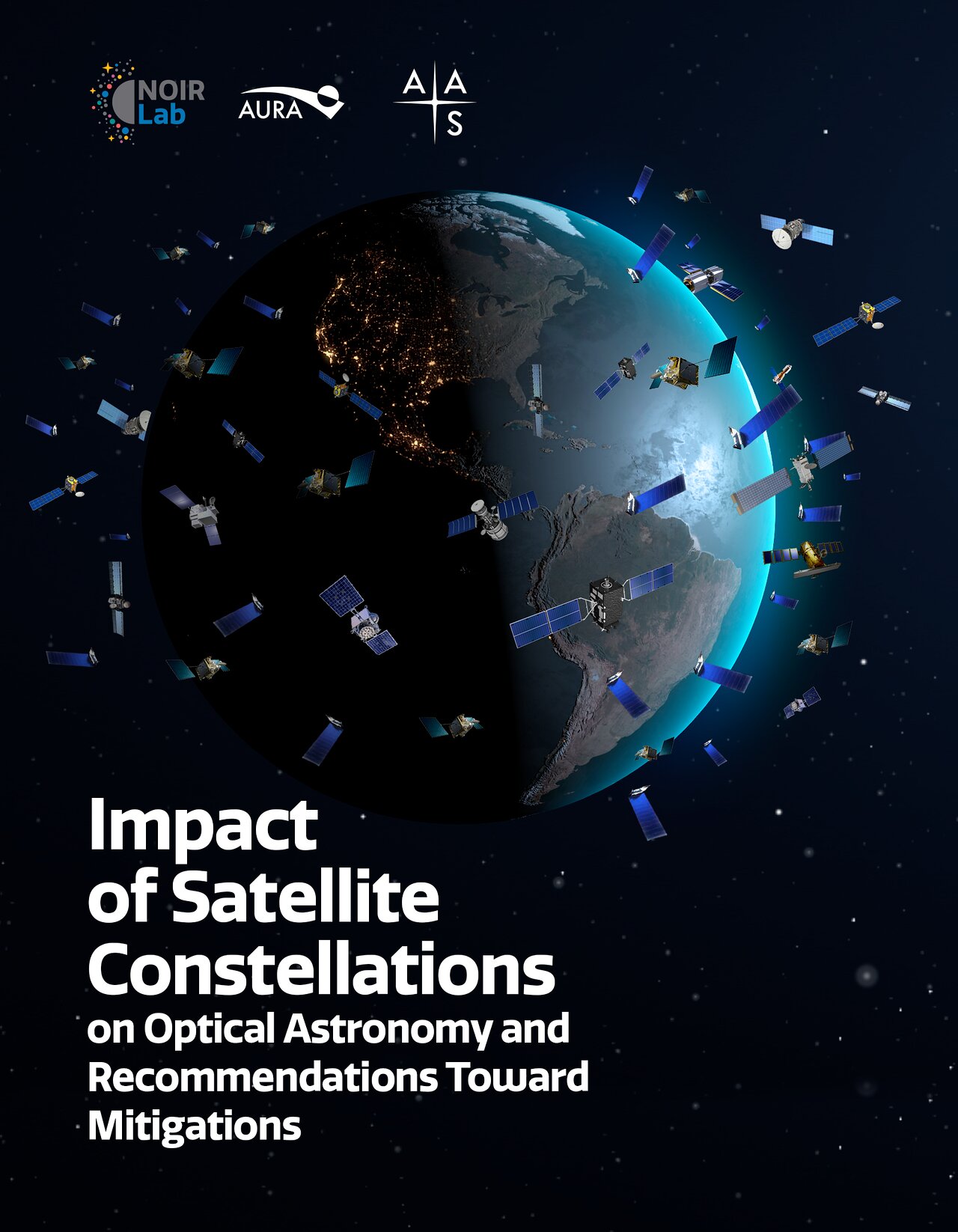Technical Document: Impact of Satellite Constellations on Optical Astronomy and Recommendations Toward Mitigations
Existing and planned large constellations of bright satellites in low-Earth orbit (LEOsats) will fundamentally change astronomical observing at optical and near-infrared (NIR) wavelengths. Nighttime images without the passage of a Sun-illuminated satellite will no longer be the norm. If the 100,000 or more LEOsats proposed by many companies and many governments are deployed, no combination of mitigations can fully avoid the impacts of the satellite trails on the science programs of current and planned ground-based optical-NIR astronomy facilities. Astronomers are just beginning to understand the full range of impacts on the discipline. Astrophotography, amateur astronomy, and the human experience of the stars and the Milky Way are already affected. This report is the outcome of the Satellite Constellations 1 (SATCON1) workshop held virtually on 29 June–2 July 2020. SATCON1, organized jointly by NSF’s NOIRLab and AAS with funding from NSF, aimed to quantify better the impacts of LEOsat constellations at optical wavelengths and explore possible mitigations.
Créditos:NOIRLab
About the Document
| Id: | techdoc003 |
| Release date: | 25 de Agosto de 2020 a las 08:09 |
| Pages: | 22 |
| Cover: | Softcover |
| Idioma: | English |
